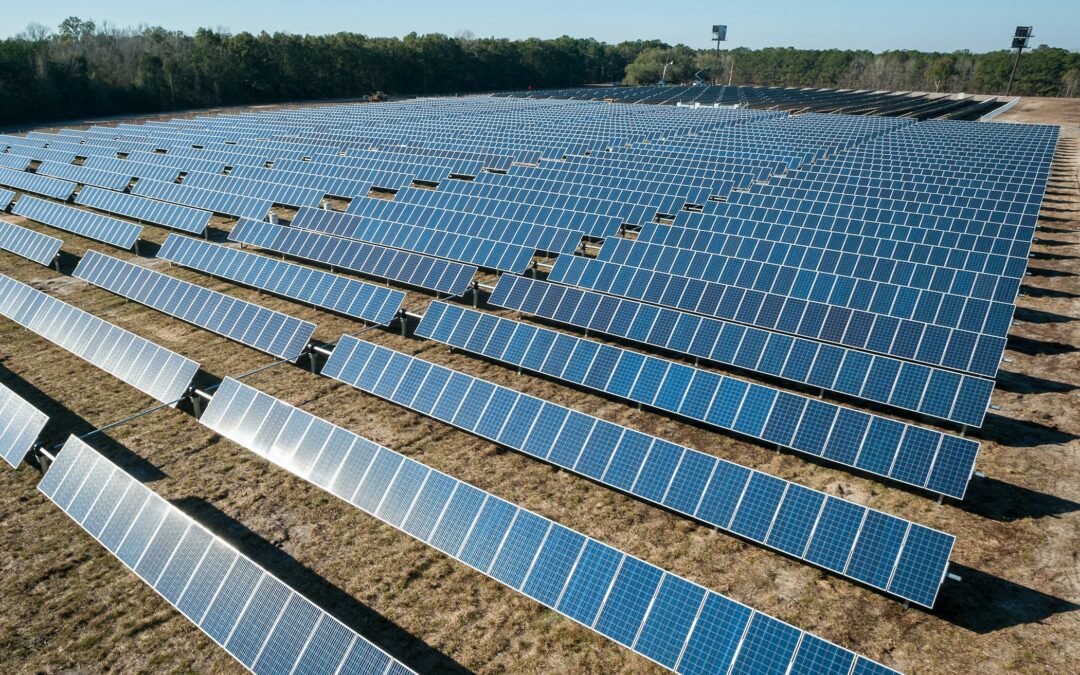Last Updated: 9 November 2023
How Solar Farms are Powering the UK’s Green Energy Transition
Solar energy is one of the most promising sources of renewable energy in the world. It is clean, abundant and affordable, thanks to the rapid advances in solar technology. In the UK, solar energy is playing a key role in reducing greenhouse gas emissions and meeting the country’s climate goals. There are now 469 solar farms across the UK, with a total capacity of 13.3 gigawatts (GW) of solar energy being produced per year.
But What Exactly Are Solar Farms And How Do They Work?
Solar farms are large-scale installations of solar photovoltaic (PV) panels that convert sunlight into electricity. They can cover hundreds of acres of land and supply power to thousands of homes and businesses. Solar farms have many benefits for the environment and the economy in the UK. They generate green, renewable and locally sourced energy that reduces reliance on fossil fuels and imported energy supplies. They also create jobs, support local communities and enhance biodiversity.
The UK has seen a remarkable growth in solar energy in the past decade. From 2014 to 2019, the solar capacity in the UK has more than doubled from 5.5 gigawatts (GW) to 13.3 gigawatts (GW). The UK now ranks among the top ten countries in the world for solar power production.
But which are the largest solar farms in the UK? We have researched and compiled a list of the top five largest solar farms in the UK that are currently in operation. Read on to discover where they are, how large they are and how much energy they produce each year.
1. Shotwick Solar Park: Largest Solar Farm in the UK
The largest solar farm in the UK is located in Flintshire, Wales, near the border with England. It is called Shotwick Solar Park and it was commissioned in March 2016 by a joint venture between the solar farm developers We-Link Energy and the Compton Group.
- Shotwick Solar Park has a capacity of 72.2 megawatts (MW).
- Shotwick Solar Park covers an area of 250 acres.
- Shotwick Solar Park consists of 277,728 solar panels.
- Shotwick Solar Park produces enough electricity to power 18,055 average households every year.
But what makes Shotwick Solar Park unique is that it is not connected to the National Grid. Instead, it has a private wire connection to the nearby UPM Shotton Paper Mill, which is the UK’s largest paper mill that uses 100% recycled paper. A private wire connection is a direct link between a renewable energy generator and a consumer, bypassing the public network like the National Grid and saving on transmission and distribution costs.
Shotwick Solar Park supplies 70% of the paper mill’s energy needs, saving the business 22,500 tonnes of CO2 emissions annually. This helps UPM Shotton Paper Mill reduce its environmental impact and maintain its competitive edge in the international market of paper production. Shotwick Solar Park is also the largest private wire solar park in Europe.
Shotwick Solar Park is a shining example of how solar energy can benefit both businesses and the planet. It shows how large-scale solar farms can provide green, reliable and cost-effective power to industrial consumers, while also supporting local jobs, local communities and local wildlife.
2. Lyneham Solar Farm: The UK’s First Military Solar Farm
The UK’s second largest solar farm is located in Bradenstoke, Wiltshire, on the site of a former runway that forms part of the RAF Lyneham base. It is called Lyneham Solar Farm and it was commissioned in March 2015 by the solar farm developers the Defence Infrastructure Organisation (DIO), which manages the UK’s military estates.
- Lyneham Solar Farm has a capacity of 69.8 megawatts (MW).
- Lyneham Solar Farm covers an area of 213.3 acres.
- Lyneham Solar Farm consists of 269,000 solar panels that are connected by over 17 kilometres of interconnecting trenches.
- Lyneham Solar Farm can produce enough electricity to power 10,000 homes as well as the new technical college at RAF Lyneham, which trains engineers for the Army, the Navy and the Air Force.
Lyneham Solar Farm is the first solar farm to be developed with the British Ministry of Defence (MOD) as its solar farm developers, and it showcases how renewable energy can support the UK’s defence and security needs. The solar farm provides green, reliable and cost-effective power to the military training college, which uses state-of-the-art equipment and facilities. The solar farm also reduces the MOD’s carbon footprint and energy bills, saving around 15,460 tonnes of CO2 emissions annually.
Lyneham Solar Farm is also compatible with the RAF’s operations, as RAF Lyneham does not house operational aircraft on a day-to-day basis and is no longer safeguarded by the MOD. This means that any glint and glare issues associated with solar panels are not relevant in this instance. RAF Lyneham remains a primary alternative airfield for emergency landings due to adverse weather conditions, but it does not interfere with the solar farm’s performance.
Lyneham Solar Farm is a pioneering example of how solar energy can benefit both the military and the civilian sectors. It shows how large-scale solar farms can provide green, reliable and cost-effective power to strategic sites, while also supporting local communities and wildlife.
3. Wroughton Airfield Solar Park: The UK’s First Solar Farm on a Former WWII Airfield
The UK’s third largest solar farm is located in Wroughton, Wiltshire, on the site of a former WWII airfield that is now owned by the Science Museum Group. It is called Wroughton Airfield Solar Park and it was commissioned in March 2016 by a joint venture between the solar farm developers Public Power Solutions (PPS), a wholly-owned company of Swindon Borough Council, and WElink Energy, a global renewable energy developer.
- Wroughton Airfield Solar Park has a capacity of 60.6 megawatts (MW).
- Wroughton Airfield Solar Park covers an area of 172 acres.
- Wroughton Airfield Solar Park consists of 231,660 solar panels that are connected by 49 central inverters.
- Wroughton Airfield Solar Park produces 60 GWh of electricity every year, which is enough to power 15,400 households.
- Wroughton Airfield Solar Park offsets 35 tonnes of CO2 emissions annually.
Wroughton Airfield Solar Park is the first solar farm to be developed on a former WWII airfield, and it showcases how renewable energy can support the UK’s cultural and historical heritage. The solar farm generates income for the Science Museum Group, which uses it to refurbish the aircraft hangars on the site so it can store its large object collections. The solar farm also preserves the airfield’s history and character, as it does not interfere with the existing buildings or structures.
Wroughton Airfield Solar Park is also connected to the National Grid, and it sells its power to HSBC Bank under a 15-year power purchase agreement (PPA). This innovative offtake structure enables HSBC to lock in certainty around their long-term cost of green energy while simultaneously de-risking the cashflow profile for the owners of the solar park.
Wroughton Airfield Solar Park is a pioneering example of how solar energy can benefit both the public and the private sectors. It shows how large-scale solar farms can provide green, reliable and cost-effective power to the National Grid, while also supporting local museums and communities.
4. Owl’s Hatch Solar Park: The UK’s Largest Dual-Use Solar Farm
The UK’s forth largest solar farm is located in Herne Bay, Kent, on the south coast of England. This Kent solar farm is called Owl’s Hatch Solar Park and it was commissioned in March 2015 by the solar farm developer Cubico Sustainable Investments, a global renewable energy investor.
- Owl’s Hatch Solar Park has a capacity of 51.9 megawatts (MW).
- Owl’s Hatch Solar Park covers an area of 213 acres.
- Owl’s Hatch Solar Park consists of 197,000 solar panels that are mounted on metal frames and tilted at a 22-degree angle.
- Owl’s Hatch Solar Park produces enough electricity to power 12,600 households every year.
But what makes Owl’s Hatch Solar Park in Kent unique is that it is a dual-use site, which means that it uses the land for both generating solar energy and grazing sheep. This allows the solar farm to coexist with the local farming activities and wildlife, while also providing income and employment opportunities for the landowners and the community.
Owl’s Hatch Solar Park is the largest dual-use solar farm in the UK, and it showcases how solar energy can benefit both the environment and the economy. It shows how large-scale solar farms can provide green, reliable and cost-effective power to the National Grid, while also supporting local agriculture and biodiversity.
5. West Raynham Solar Farm: The UK’s First Solar Farm on a Former RAF Base
The UK’s fifth largest solar farm is located in West Raynham, Norfolk, on the site of a former RAF base that was decommissioned in 1994. It is called West Raynham Solar Farm and it was commissioned in March 2015 by the solar farm developer Bluefield Solar Income Fund, a specialist investment company focused on solar energy.
- West Raynham Solar Farm has a capacity of 49.9 megawatts (MW).
- West Raynham Solar Farm covers an area of 225 acres.
- West Raynham Solar Farm consists of 197,000 solar panels that are connected by 49 central inverters.
- West Raynham Solar Farm produces 48,153 MWh of electricity every year, which is enough to power 14,000 households.
- West Raynham Solar Farm offsets 21,460 tonnes of CO2 emissions annually.
West Raynham Solar Farm is the first solar farm to be developed on a former RAF base, and it showcases how renewable energy can reuse and revitalise brownfield sites. The solar farm generates income for the Raynham Estate, which owns the land and leases it to Bluefield Solar Income Fund for 25 years. The solar farm also preserves the RAF’s legacy and heritage, as it does not interfere with the existing buildings or structures, some of which are listed as Grade II Listed Buildings.
West Raynham Solar Farm is also connected to the National Grid, and it sells its power to various energy suppliers under long-term contracts. This ensures a stable and predictable revenue stream for the owners and investors of the solar farm.
West Raynham Solar Farm is a pioneering example of how solar energy can benefit both the rural and the urban sectors. It shows how large-scale solar farms can provide green, reliable and cost-effective power to the National Grid, while also supporting local estates and communities.
The Canworthy Water Solar Farm serves as a testament to the growing role of solar energy in the UK’s energy mix. It’s a shining example of how renewable energy can be successfully integrated into the landscape, providing clean power while minimizing environmental impact.
Future Solar Farms
Large scale solar farms are constantly being built in the UK, with the following solar farms awaiting construction in the next 5 to 10-years, Milltown Airfield (Speyslaw) 50MW, Ockendon Landfill Solar Farm 49.9MW, RAF Desborough49.9MW, Rhyd y 49.9MW, Llanwern 49.9MW, The Grange 49.9MW and South Lowfields Farm 49.9MW.
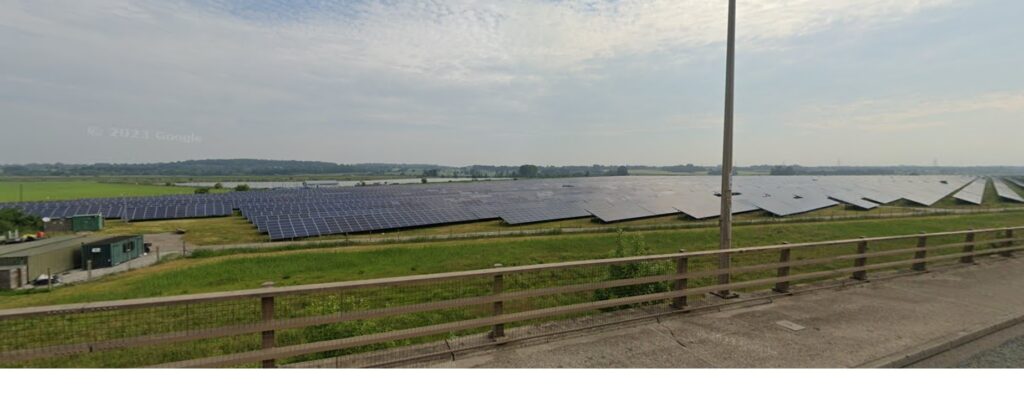
Do you have land for a Solar Farm?
The UK is now home to hundreds of solar farms that are transforming the way we produce and consume energy. They are not only providing green, renewable and locally sourced power to millions of homes and businesses, but also creating jobs, supporting communities and enhancing biodiversity. Solar farms are a win-win solution for the environment and the economy. Do you have land in the UK that could be suitable for a solar farm? If so, we would love to hear from you! We are looking for landowners who share our vision of powering the UK on solar energy. Together, we can make a difference, by building more solar farms that benefit everyone in not only the short-term, but also in the long-term.
Conclusion
Feeling ready to invest in Solar Panels? Want to learn more? Your best option is to talk to one of our friendly solar energy experts on 01268 928 690 or click on the ‘Enquire Now’ button below and we will help you find the right fit for your home and budget. Remember we are both an MCS Certified PV (Panels) Installer and an MCS Certified Battery Storage Installer. MCS Certification is a mark of quality. Our membership of MCS demonstrates our strict adherence to these recognised industry standards; highlighting quality, competency and compliance.
NXTGEN Energy – Your Trusted Solar Energy Partner 💚
Frequently Asked Questions About Solar Farms
The average ROI (return on investment) for a solar farm in the UK is between 10 to 20%. Meaning, most solar farms pay off their installation costs within the first five to ten years. After that they are pretty much printing free money. As long as they are well maintained and offer consistent, reliable energy production.
The biggest threat to British food production and security is not solar PV generation on moderate quality agricultural land, but is in fact climate change . As the 2022 summer heatwave has shown, the UK is poorly equipped to deal with the extremes wrought by a changing climate.
At 72.2MWp, Shotwick Solar Park is the largest solar park in the UK and the largest private wire connection in the UK. Located in Deeside, Flintshire, the solar park supports the UPM paper manufacturing plant which operates 24/7 and manufactures 100% recycled paper.
Based on the average annual consumption of a household, for every 5 megawatts (MW) of solar PV installed, a solar farm will power approximately 1,500 homes for a year. Approximately 25 acres of land is required for every 5 megawatts (MW) of solar PV installation.
It costs around £8,000 to £10,000 to buy one acre of land in the UK. You could fit around 4,000 solar panels on an acre, which would cost around £3 million to buy and install. You will also have to pay additional costs for connecting your panels to the National Grid, and for solar panel maintenance and cleaning.
- New solar panel concept could reduce payback time to just five years
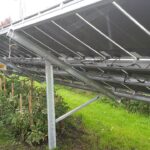 Researchers have conducted a comprehensive analysis and determined that a ground-breaking renewable energy concept has the potential to significantly reduce the payback period for solar panels to less than five years. This innovative approach, known as agrivoltaics or Agri-PV, involves the integration of solar farms with “shadow-friendly” crops. A team of experts from the esteemed… Read more: New solar panel concept could reduce payback time to just five years
Researchers have conducted a comprehensive analysis and determined that a ground-breaking renewable energy concept has the potential to significantly reduce the payback period for solar panels to less than five years. This innovative approach, known as agrivoltaics or Agri-PV, involves the integration of solar farms with “shadow-friendly” crops. A team of experts from the esteemed… Read more: New solar panel concept could reduce payback time to just five years - UK’s largest solar farm given go ahead to be built in Chelmsford, Essex
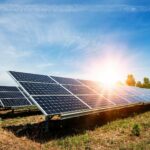 Longfield Solar Farm: A Giant Step Towards Renewable Energy in the UK The UK government has approved the construction of the country’s largest solar farm near Chelmsford, Essex. The project, called Longfield Solar Farm, will cover about 380 hectares (940 acres) of farmland and generate up to 500 megawatts (MW) of electricity, enough to power… Read more: UK’s largest solar farm given go ahead to be built in Chelmsford, Essex
Longfield Solar Farm: A Giant Step Towards Renewable Energy in the UK The UK government has approved the construction of the country’s largest solar farm near Chelmsford, Essex. The project, called Longfield Solar Farm, will cover about 380 hectares (940 acres) of farmland and generate up to 500 megawatts (MW) of electricity, enough to power… Read more: UK’s largest solar farm given go ahead to be built in Chelmsford, Essex - 5 Biggest Solar Farms in the UK 2023
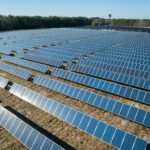 Last Updated: 9 November 2023 How Solar Farms are Powering the UK’s Green Energy Transition Solar energy is one of the most promising sources of renewable energy in the world. It is clean, abundant and affordable, thanks to the rapid advances in solar technology. In the UK, solar energy is playing a key role in… Read more: 5 Biggest Solar Farms in the UK 2023
Last Updated: 9 November 2023 How Solar Farms are Powering the UK’s Green Energy Transition Solar energy is one of the most promising sources of renewable energy in the world. It is clean, abundant and affordable, thanks to the rapid advances in solar technology. In the UK, solar energy is playing a key role in… Read more: 5 Biggest Solar Farms in the UK 2023

